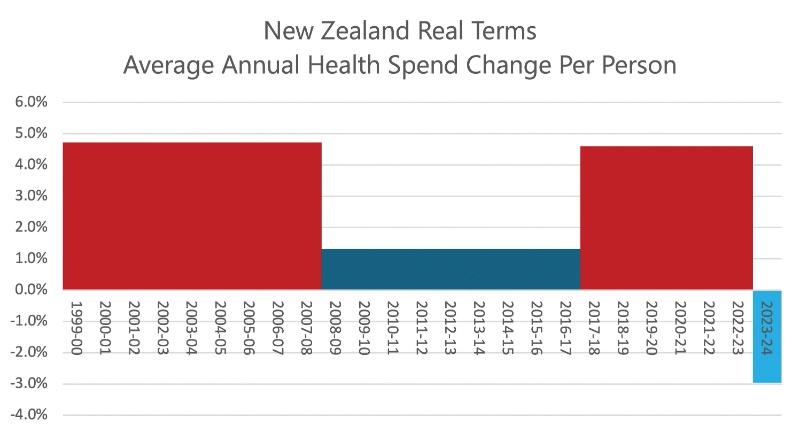New Rail Deviations Needed To Improve Productivity
In light of the governments shopping list of roading projects, TRAC would like to draw attention to the governments total wilfully neglectful attitude to rail, climate change, pollution, road congestion and road safety. TRAC would also like to draw attention to many rail projects that are necessary to meet climate obligations, to maintain our international stranding as a clean, green nation and to offer New Zealanders a greater choice of travel, especially for the old, the young, the disabled and those on low incomes. The current government will clutter our roads with far too many vehicles, and looking at the $33 billion to be spent over the next three years, TRAC suspects that motorists will pay a heavy price in more ways than one.
TRAC believes that there is a need for new railway lines to speed up productivity on the North Island Main Trunk railway and reduce costs to customers in this time of new roads always and everywhere. TRAC believes that some investment is also needed in rail to keep it competitive with road transport and keep it relevant to the transport industry.
TRAC National Coordinator Niall Robertson says, “Billions are being spent on roads, such as a new motorway from Otaki to Levin, to add to the millions spent recently from Tawa to Otaki, while the railway has stayed the same”. Robertson says, “The railway is forced to go via Palmerston North to get to northern destinations when it could go the same route as State Highway 1 from Levin to Greatford near Marton”. Robertson adds, “This deviation plus another shortcut from Drury to Whangarata near Pokeno would speed up the time from Auckland to Wellington and the South Island”
TRAC believes that rail in the southern half of the North Island is being run down by the government while roads are in a process of continual renewal. However, Robertson points out that the southern deviation from Marton to Levin will shorten distances from New Plymouth, Whanganui, Hamiltion, Tauranga and Auckland to Wellington and the South Island which would likely bring a lot more freight onto rail and off the roads.
Guy Wellwood says this is important for a variety of reasons. Wellwood says that this will create more competitive rates on these routes for New Zealand industry, but will also have far wider advantages for motorists with less road congestion and much safer roads, not to mention lower road maintenance bills with less trucks on these routes” Wellwood adds that there will be far less CO2 emissions, less particulate matter from truck exhausts, tyres and brakes and there will be less need to have to build large four lane land gobbling motorways eating up a lot more arable land”.
Robertson adds that the economics of these advantages are significant and are often underestimated. That is why the current government has totally underestimated the highly negative ramifications of scrapping the iReX rail ferry programme. They better be about to order new rail capable RORO ferries or our roads will be torn to shreds by far too many trucks and there will be significant increases in freight rates between the islands.
TRAC believes that KiwiRail is failing due to too much government interference and the SOE trading model it has to foillow. Robertson says, “Governments are always looking at ways to reduce what they spend, and the best way to do this is to allow a private company to buy rail equipment and lease these to KiwiRail and competitors”. Robertson believes that there is considerable scope for short line operators to haul a lot of freight that KiwiRail has turned its back on due to its trading model”
Robertson says, “New Zealand is an outlier as country when it comes to rail as we do not value it, which is strange considering all of the advantages”. Robertson adds, There are a lot of myths in New Zealand about rail, such as that it is ‘old technology’, but trains are new like cars and trucks, and that rail is ‘expensive to run’, yet it uses less land and where freight trains have a 72% subsidy, road freight has an 85% subsidy!” (MoT figures) Robertson and Wellwood say they are both frustrated that these myths are perpetuated and the other major factors, such as pollution, safety and congestion problems are ignored.
TRAC believes there is a need for greater productivity in the rail sector and building new lines and allowing more private investment into rail is the way to do it.


 Gordon Campbell: On The Americanising Of NZ’s Public Health System
Gordon Campbell: On The Americanising Of NZ’s Public Health System Walk Without Fear Trust: New Sentencing Reforms Aimed At Restoring Public Safety Welcomed
Walk Without Fear Trust: New Sentencing Reforms Aimed At Restoring Public Safety Welcomed Rio Tinto & NZAS: Archaeological Project Underway From Historic Excavations At Tiwai Point
Rio Tinto & NZAS: Archaeological Project Underway From Historic Excavations At Tiwai Point New Zealand Deerstalkers Association: NZDA Urges Hunters To Prioritise Safety This Roar Season
New Zealand Deerstalkers Association: NZDA Urges Hunters To Prioritise Safety This Roar Season PSA: 1000 Days Since Landmark Pay Equity Deal Expired - Workers Losing $145 A Week
PSA: 1000 Days Since Landmark Pay Equity Deal Expired - Workers Losing $145 A Week Grace Tinetali-Fiavaai, RNZ: Widow Of Fa'anānā Efeso Collins Seeks Inquiry Into His Death - 'Unanswered Questions'
Grace Tinetali-Fiavaai, RNZ: Widow Of Fa'anānā Efeso Collins Seeks Inquiry Into His Death - 'Unanswered Questions' Te Pāti Māori: Te Pāti Māori Call For Mandatory Police Body Cameras
Te Pāti Māori: Te Pāti Māori Call For Mandatory Police Body Cameras


